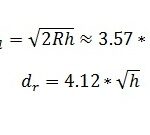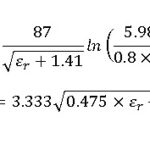What is the Difference Between MIMO and Multi-MIMO?
In the world of wireless communication, you’ve likely heard of MIMO and Multi-MIMO. These technologies are vital for improving the efficiency, speed, and reliability of modern mobile networks like LTE and 5G. But what exactly do they mean, and how are they different? Let’s break it down so you can understand it more clearly.
MIMO stands for Multiple Input Multiple Output. It is a technique used to improve the performance of wireless communication systems. Essentially, MIMO uses multiple antennas at both the transmitter and receiver ends of a wireless communication link to send and receive more than one data signal simultaneously. This allows for higher data throughput, better signal quality, and increased capacity of the network.
The main concept behind MIMO is that by using multiple antennas, the system can take advantage of the multipath propagation of radio waves. When a signal is transmitted, it may take multiple paths before reaching the receiver due to reflections off walls, buildings, or other obstacles. MIMO can exploit these multiple paths to improve the signal strength and reliability, thus providing faster and more stable connections.
Now, let’s talk about Multi-MIMO. In simple terms, Multi-MIMO is an enhanced version of MIMO. It extends the MIMO concept to a larger scale, typically involving a greater number of antennas at the base station and user equipment (UE). While MIMO uses multiple antennas to create spatial streams (each carrying a separate data signal), Multi-MIMO increases the number of spatial streams even further, providing even greater capacity and higher data rates.
Multi-MIMO typically uses advanced algorithms and techniques such as beamforming, which helps direct the signal more precisely toward the receiver, improving signal quality and reducing interference. This allows for more efficient use of the available spectrum and is particularly important in high-density areas where network demand is high.
So, how do MIMO and Multi-MIMO differ? The primary differences can be summarized as follows:
- Scale: MIMO typically uses a small number of antennas (e.g., 2×2 or 4×4), whereas Multi-MIMO involves a larger number of antennas (e.g., 8×8, 16×16, or more), providing even greater capacity and performance.
- Capacity: While MIMO improves throughput by sending multiple data streams over different spatial paths, Multi-MIMO takes this concept further, allowing for more data streams and thus much higher throughput, especially in high-traffic areas.
- Advanced Features: Multi-MIMO often includes additional features such as massive MIMO, beamforming, and more sophisticated signal processing techniques to optimize performance, which is typically not as advanced in standard MIMO systems.
- Use Cases: MIMO is widely used in most LTE networks, while Multi-MIMO (or Massive MIMO) is a key feature in 5G networks, where it plays a crucial role in meeting the demands for faster speeds and better service quality.
In essence, both MIMO and Multi-MIMO aim to improve wireless communication efficiency, but Multi-MIMO does this on a much larger scale. As we’ve seen in previous articles on 5G and LTE technologies, Multi-MIMO is one of the driving forces behind the enhanced capacity and speed of 5G networks. By increasing the number of antennas and spatial streams, Multi-MIMO enables better user experiences, even in dense environments like cities and stadiums.


